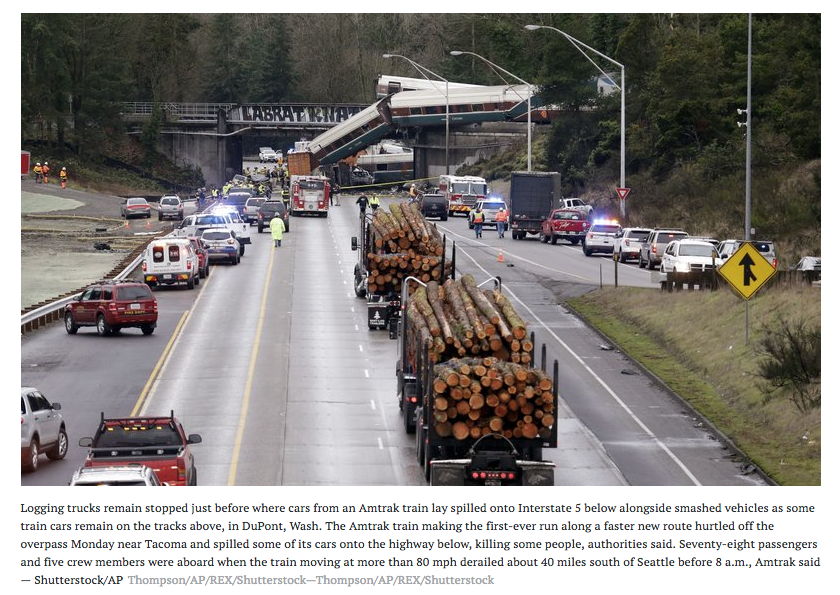Positive train control not the most important rail safety improvement
The deadly passenger rail crash in Washington State on December 18, 2017, appears to have been the result of excessive speed. This raises questions as to why positive train control that would have automatically slowed or stopped the train was not put in place along the recently upgraded rail line where the crash occurred. But, in a posting at newgeography.com on December 22, 2017, Randal O'Toole points out that safety improvements other than positive train control would actually have a greater effect on reducing injuries and deaths resulting from railway crashes. He notes that, " . . . Around 800 people die in railroad accidents a year. PTC would prevent only about 1 percent of these fatalities; far more would be saved by spending the same amount of money on better grade crossings and fencing of rail rights of way."
